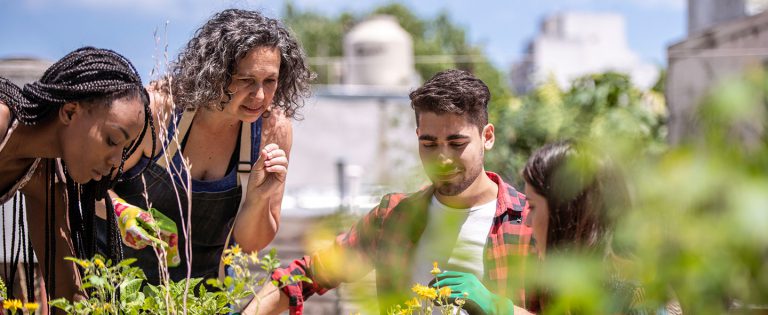
Community visioning is a collaborative process of giving the people who live, work, and play in a place the opportunity to have a say about what they want their community to be like in the future.
Broadly, community visioning takes into account:
Through this process, a community might imagine what it wants to be like in a few years, or it might look ahead to 20 years and even beyond.
Community visioning can result in a ‘big picture’ statement, a series of statements, or become the heart of a detailed community plan.
The process creates a shared community vision that is aspirational and forward-thinking. It provides a blueprint to guide key decisions about that community, particularly those made by government. It can also help guide how services and products are provided by community-based and non-government organisations, and how developers and other investors shape and contribute to that community.
Undertaking a collaborative community visioning process ensures the future you’re working towards as a government is the one your community wants.
It gives your community a voice, engages locals of all ages and from all walks of life in decision-making, and builds trust. Community members feel heard and valued. Bringing people together to share ideas and imagine a new future also builds community pride and social cohesion. It strengthens community identity and the vision can underpin your community brand and how you market and promote your community.
A community vision also helps guide government investment and planning in the short and long term, which can then be measured in light of progress towards the vision.
Community visioning is often prompted by one or more of the following:
For local governments, community visioning can play a critical role in corporate and strategic planning, land use planning, developing short and long-term budgets, and short and long-term planning for infrastructure and services.
| What do you want to achieve through community visioning? |
|
| How well do you know your community? |
|
| How much time do you have to deliver community visioning? |
|
| How much budget do you have/need? |
|
| What resources do you have available? |
|
| How will you involve your elected representatives? |
|
Broadly, community visioning involves answering five key steps to determine:
| Step | Which delivers… |
| Where are we now? | An inventory of current assets, opportunities, and challenges |
| Where are we going? | Future scenarios based on current those assets, opportunities, and challenges |
| Where do we want to be? | Preferred future, based on shared values and aspirations |
| How do we get there? | Decisions and actions required to make the vision possible, with clear indicators and measurements |
| Are we making progress? | An overview of performance (through monitoring and reporting) and opportunity to recalibrate actions as necessary |
Broad: Community-wide, highly accessible engagement that enables everyone who wants to be involved to do so, in a way that works for them.
Targeted: Focused conversations with particular groups, segments or stakeholders, via interviews, forums, or panels.
Deliberative: A specially convened, representative, and informed panel of citizens who play an active role in decision-making.
A platform for collaboration and advocacy
Having a clear community vision helps government organisations (and elected members) better represent their communities because they understand what is important to them from a ‘big picture’ perspective.
Community visions often transcend the remit of the level of government (or organisation) that helped create them.
This then identifies areas where advocacy to and/or collaborative efforts with other levels of government or other stakeholders may be required to deliver particular elements of the vision.
EngagementHQ provides a range of tools and widgets that help create trust and transparency in your community visioning process.